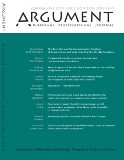
Suarez' Disputationes Metaphysicae and Meddieval theories of the transcendentalists
Suareza Disputationes Metaphysicae i średniowieczne teorie transcendentalistów
Keywords: translation from German into Polish (transl. Seweryn BLANDZI)
More...
Keywords: translation from German into Polish (transl. Seweryn BLANDZI)
More...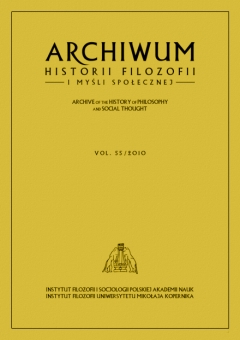
Keywords: Suárez; transcendentals; Scotus; Disputationes metaphysicae;
According to the prevailing view Suárez’ transcendental theory in the first part of his Disputationes metaphysicae follows the outline of the scotistic scientia transcendens. This view needs some correction: While Suárez adopts the scotistic quidditative and univocal concept of being, he does not follow scotus’ way of thinking in the elaboration of his theory of the transcendentals. Rather by a systematic examination of the scotistic position he develops a new transcendental approach. It contains the program of an inner conceptual explication of the nature of being as such. This program requires to overcome the cognitive models, which are at the base of the scotistic scientia transcendens: the model of composition, which rules the transcendental analysis and the model of real property (proprium, per se accidens) which rules Scotus’ interpretation of the attributes of being as being. These attríbutes (passiones entis) according to Suárez immediately explicate the nature or perfection of being as being. By this assumption – directed against Scotus – Suárez tries to think transcendentality of being in a radical way also in view of the attributes of being as such, and – although these attributes then have to be considered as being only conceptually and not really distinct from being as such – to conserve metaphysics as a scientia realis: by the account of the – only conceptually distinguishable – attributes of being in general metaphysics gives a veritable explication of the real nature of being. In a very similar way the objective and the method of the transcendental explication of being were understood by Aquinas and other medieval authors in the prescotistic tradition of the doctrine of the transcendentals. Suárez consciously takes up this tradition. So it seems that his examination of the scotistic position aims at a competitive alternative theory, which continues and transforms the prescotistic line of transcendental thought on the base of the unified quiditative concept of being. Suá- rez’ transcendental theory therefore may be inscribed in the “Wirkungsgeschichte” (history of effects) of the scotistic as well as of the prescotistic – especially thomistic – doctrine of the transcendentals.
More...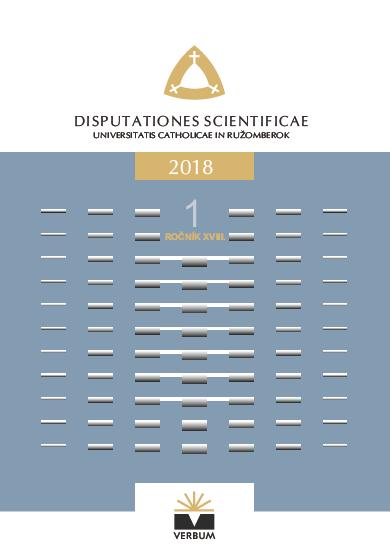
Keywords: Thermal imaging; Building diagnostics; Insulation layers;
The paper presents the quality and effectiveness of thermal imaging studies as the function of many factors directly related to the subject, to the physical environment surrounding them and to the knowledge and experience of the researchers. The authors undertake the task to apply thermal imaging of a building and perform the simulation by means of computational fluid dynamics tools to conduct a comprehensive analysis of the tested multilayer partitions. The methodology for conducting both methods and analysing the results has been presented. The images indicate malfunction spots and enable the discussion on the improvement method especially in the insulation layers.
More...
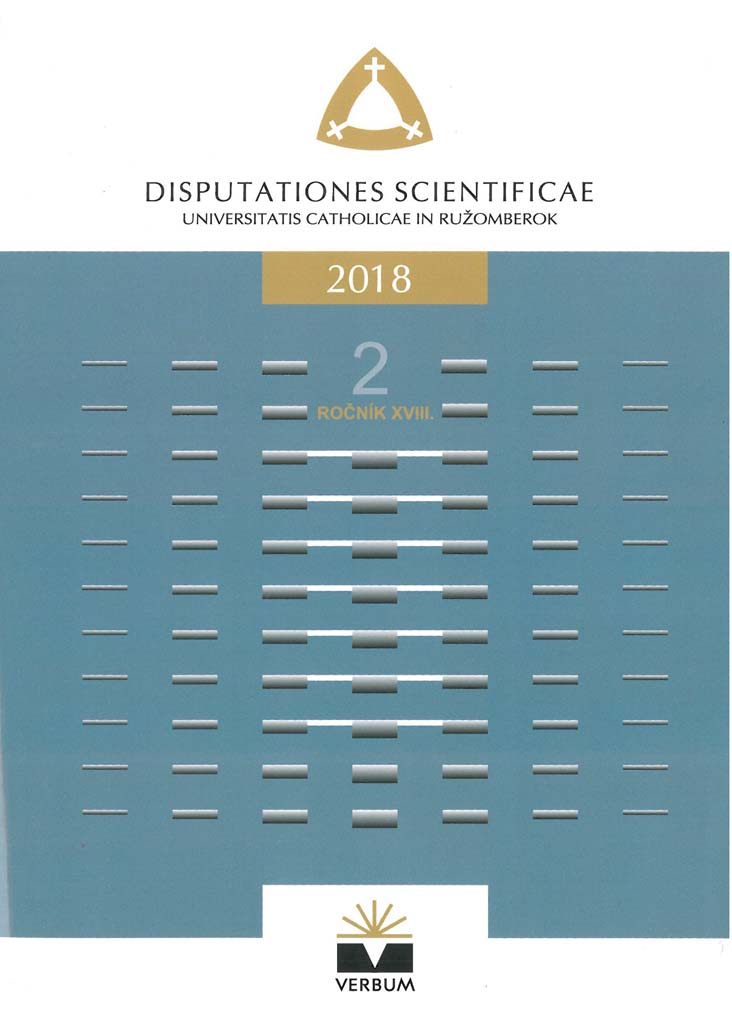
Keywords: Surface water; Water quality; Water pollution
The paper deals with the monitoring of the Jasenica River, where all of 21 samples collection were collected and analyzed during last four years. Each take-off was taken in 7 different places of the stream. Begining with the stream in Banská Belá, up to the mouth of Hron River. The analyzeswere carried out in 10 different indicators of water quality, which were compared with the limit values in Goverment Regulation 269/2010 Cool Annex No. 1. Parameters of Nitrogen were recorded as the most significant pollution in monitored River.
More...
Keywords: Wallcreeper; Behaviour; West Carpathians
From 1982-2017 behavioural patterns of the wallcreeper (Tichodroma muraria) were studied in the mountains of central Slovakia. All breeding sites, which were situated between 400 m to 1550 m a. s. l., consisted of limestone. Winter sites created prevailingly abandoned limestone quarries in the vicinity 4 to15 km from the breeding habitats at an altitude between 450-700 m a. s. l. The proportion of the birds activity devoted to different behavioural forms differed with season. Two facts – conspicuous coloration of wings and visual display play an important role in social behaviour in wallcreeper. They developed as communication means among individuals of this bird species and also with other bird species sharing the same habitat as compensation instead of acoustic communication. Both conspicuous coloration and visual displays became ethological necessity in wallcreeper in the noisy environment of the gorges.
More...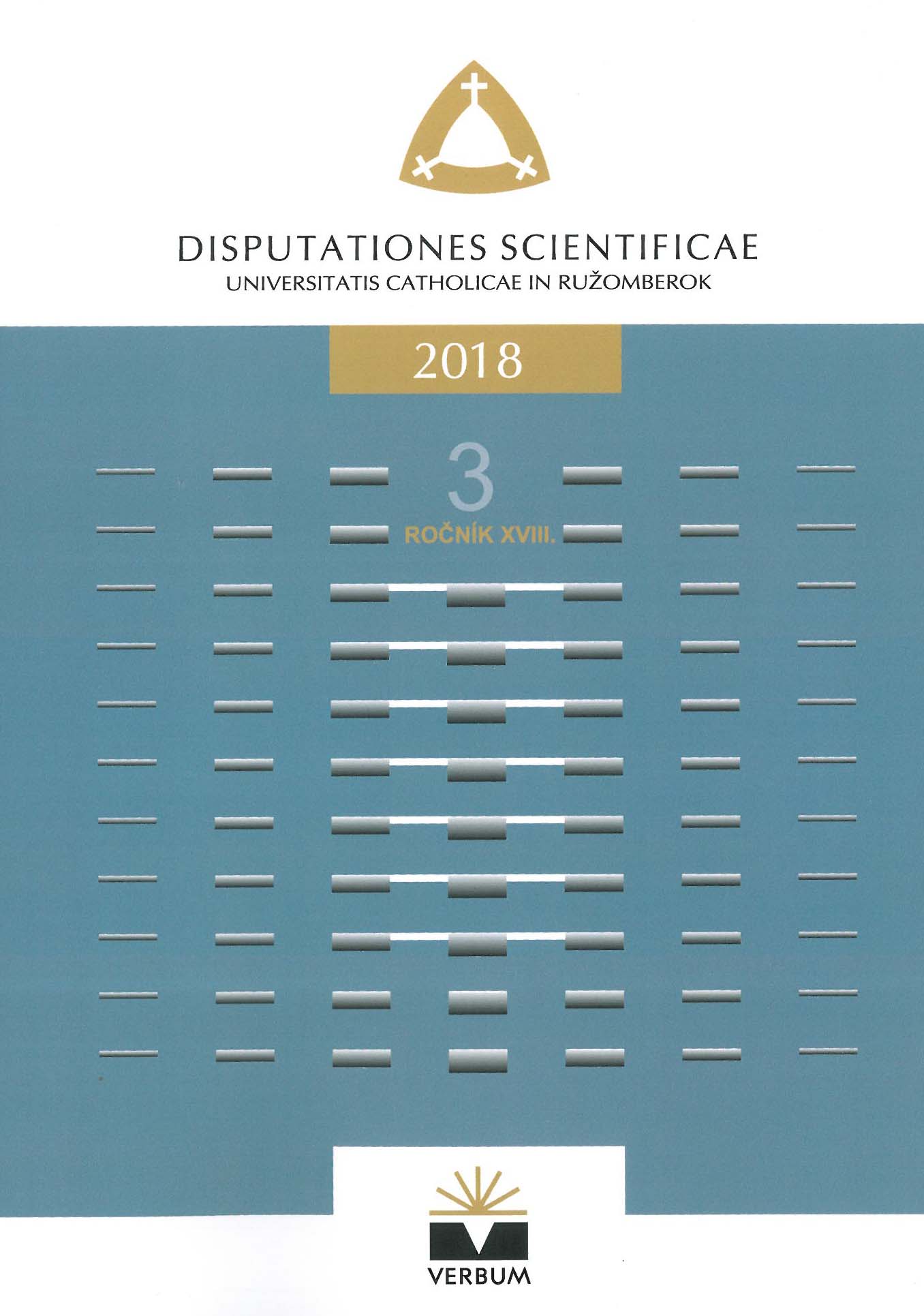
Keywords: Communication area; Health; Work; Mobbing; Bossing
Purpose: The concept of "bossing", a psychological terror at work, carried out by the superior over the subordinates, is a pathological phenomenon and by its existence negatively affects a variety of factors in the organization, such as the work performance of the subordinates, their health status, the quality of the working atmosphere, the reputation of the organization. That is why the aim of the paper to analyse the occurrence of bossing in the secondary school environment in the Slovak Republic in the categories "Communication area" and "Health area". Proposal (methodology) approach: Three methods were used to analyse this phenomenon: empirical, analytical and mathematical--statistical methods. The data obtained by the questionnaire technique allowed to evaluate the problems associated with bossing. The survey was carried out during 2017 and included the necessary number of 393 respondents from secondary schools. Findings: Our research has confirmed that bossing does not occur in the examined categories. However, the results, which are within accepted tolerance, indicate that the absence of bossing is not definite. Research/Practical Consequences: Our research has several implications. First, it confirmed that bossing does not occur in the examined categories. Secondly, the observed values indicate that this phenomenon needs to be periodically monitored in the future as it tends to expand in the European area. Originality/value: The originality of the paper is the result of the presentation of a qualitative research related to the significant pathological phenomenon that may arise in the organization at any time.
More...
Keywords: Physical education; Physical fitness; Rzeszów
Physical activity is one of the main factors influencing the health of young people. The aim of the study was to analyze the relation of children to be physically active. Ways of spending free time for children in Rzeszów. The aim was also to determine how big is the share of children in additional classes. An attempt was made to evaluate diet and eating habits of the respondents.
More...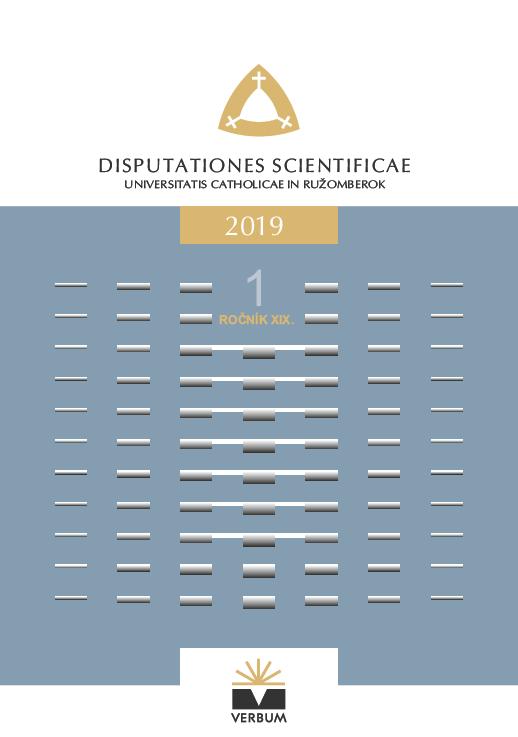
Keywords: Employment; Measures; Youth; Company; Operational program;
In the Slovak Republic, young people have a special position in the field of employment services. The planned support measures and initiatives addressed to young people aimed at offering employment, further education are considered important, how much youth unemployment has a serious impact on individuals as well as on society and the economy. The program was developed in line with the European Commission's curriculum.
More...
Keywords: Social anthropology; Higher education; Historical and pedagogical analysis; Society; Personality;
The article analyzes the socio-anthropological origins of higher education in the historical and pedagogical approaches. The multi-dimensionality of the investigated phenomenon in the context of activity, behavior, value and information aspects has been updated. Inter-civilization advantages of higher education, which contributed to the unification of knowledge of natural and mathematical and humanistic content, have been consolidated. The subject of the study is higher education in the context of socio-anthropological transformations. The purpose of the article is to reveal the socio-anthropological content of higher education. The author investigates the historic and scientific research origins of the study, describes the multifunctional nature of higher education at the present stage of society development. The research tools for the study were chronological and content, incremental, historical, pedagogical and comparative methods. In the framework of the systematic and the interdisciplinary approaches, the author develops the idea that the institutional nature of higher education forms resource potential of social and anthropological components. Therefore, the awareness of the mechanism of activity of social institutions, being centered on the activity, is gaining the behavioral features. The use of such a broad methodological spectrum allows emphasize that the augmentation of the cultural potential of the society is reflected in the socio-cultural environment. The construction of the environment is observed as a three-dimensional model, which includes the society, the culture and the relationships. The attractive image of higher education is based on its epistemological identity, which is a product of cultural development during many centuries and replicates the microclimate of internal territories, which is important in terms of the realization of creative potential of the subjects of knowledge. On a research level, it is emphasized that such course of events development becomes possible due to strengthening the relationships between a personality and a society, by enlarging the variety of activity performance of higher education. Based on theoretical preconditions, the author points out that the main institutional and cultural changes, which were reflected in the development of higher education, were the result of internal social and personal transformations. The attention is drawn to the characteristics of the systems of education and employment, state policy and socio-cultural aspects of development of states. The author focuses on the determinacy of new pedagogical developments that affect the effectiveness of the functioning of higher education in general (cross-section factor). The article illustrates the scientific points of contact of higher education and social anthropology; socio-anthropological sources of higher education, component structure of the higher education functioning environment. The study also presented the analysis of the social institutions – the fundamental parts of the formation of social identity (institutional cross-section) in the context of the development of higher education in general. Within the institutional aspect, various tools and strategies for social development are considered as the main ways of social identity forming. Special attention is paid to the innovative pedagogic idealism, which is a prospective project for the formation of the most effective educational paradigm and for design of knowledge levels in accordance with the existing educational stage. It has been summarized that, being based on different civilization transformations, there are very similar social mechanisms for the functioning of higher education, which affect participation of the personality in activities of different levels within the social institutions; it updates the social mobility issue and allows neutralizing the problem of social inequalities.
More...
Keywords: Beetles; Peatlands; NP Tisovnica; NPR Klin; CHKO Horná Orava;
The aim of this research is to map the community of beetles on selected peatlands in Horná Orava (PR Tisovnica – village Oravská Polhora, NPR Klinské rašelinisko, village Klin). On each of the peatlands were selected two ecotopically different locations (A, C – meadow and B, D – meadow / forest) were represented by flowering herbs from the families: Ranunculaceae, Asteraceae, Alliaceae, Fabaceae, and Brassicaceae. The etomological material was collected by the exhaustor and slipping grasslands during the vegetation period (May – October) in the year 2016. At the PR Tisovnica were 334 individuals (ex.) with 32 species (sp.). They belong to 9 families were registered in the herbage. The NPR Klinské rašelinisko showed a total of 386 ex. on flowering plant species with 9 species from 6 families. In PR Tisovnica, the highest values of dominance were the following eudominant species (ED): Apion apricans (22,2 %) from the family Curculionidae, Chrysolina fastuosa (12,9 %) and Chysomela coerulans (13,7 %) from Chrysomelidae. The NPR Klinské rašelinisko has eudominant (ED) species as Rhagonycha fulva (18,4 %) of the family Cantharidae, Cetonia aurata (16,8 %) of the family Scarabaeidae, Athous niger (13,7 %) of the family Elateridae, Strangalia maculata 12,7 %) of the family Cerambycidae and Otiorhynchus ligustici (10,7 %) of the family Curculionidae (Table no 1).The tables no. 2 and 3 shows the species representation of beetles, their abundance (dominance), cenotic charakteristic and their developmental and trophic binding to the flowering plant species.
More...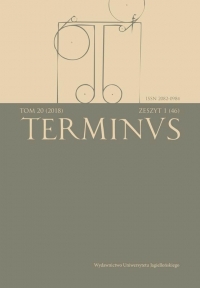
Keywords: Jakub Wujek; Robert Bellarmine; Augustyn Biesiekierski; Bible; holy images;Biblical commentaries; intertextual relations
The first part of the paper is dedicated to the issues of adapting the Biblical commentaries on idolatry and ‘entitled’ depictions—originally featured in Disputationes de controversiis Christianae Fidei published by Robert Bellarmine—for the purpose of Jakub Wujek’s endeavour to translate the Bible into Polish. A careful analysis has shown that at least four out of thirteen of the investigated commentaries are adaptations of Bellarmine’s considerations in the form of translations or paraphrases. Building upon this discovery, the author proceeds to the second part of the paper, where he poses a question about the possibility of there being an indirect reception of Bellarmine’s theological categories, which might have occurred in the discussed biblical commentaries. The problem is addressed by comparing Augustyn Biesiekier ski’s A Short Treatise on Adoration and Veneration of Sacred Images (the author made use of the Disputationes…, as proved by Piotr Krasny) and the content of respective commentaries.
More...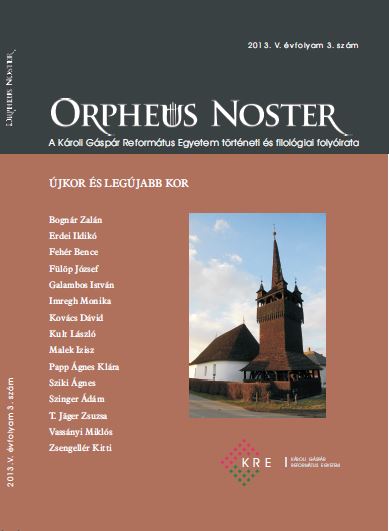
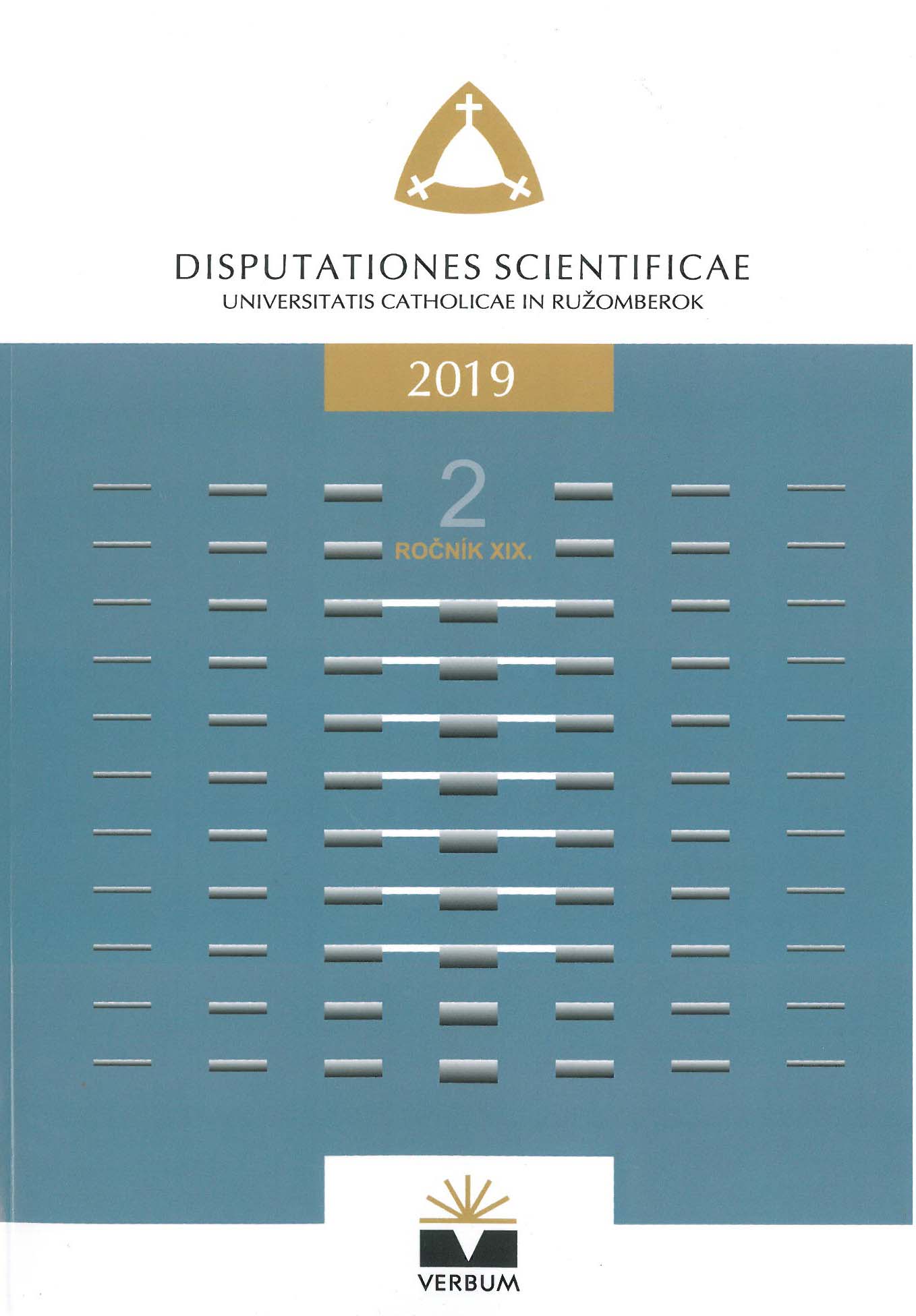
Keywords: Insect; Vertical zoning; Liesková; Skalité; CHKO Kysuce; Nord Slovakia;
During the vegetation period (april – october) in the year 2017 we observed the communities of insect (Insecta) in a meadow – forest biotop near the village of Skalité on the hill Liesková (849 MASL, CHKO Kysuce, Nord Slovakia). The object of examination was to determine the effect of vertical zoning study area at the communities of insect on three selected stations with different altitudes (site A – 849 MASL, site B – 700 MASL, site C – 550 MASL). We counted approximately 1222 ex. of insect. They belong to 76 different species originating from 7 orders, 26 different families. From the quantitative point of view at site A (849 MASL) were 312 ex. The lower-altitude station site B (700 MASL) was represented by 410 ex. Site C (550 MASL) located at the lowest altitude was represented by 456 ex. The most represented species were Chrysomelidae and Curculionidae with 9 species (11.9%). The Table n. 1 shows the number of individuals insect, category of dominance and the summary abundance of species in the study aireas. The Graph n. 1 compares the seasonal dynamics of the insect in the study biotops with different vertical zoning on the hill Liesková (550 – 849 MASL).
More...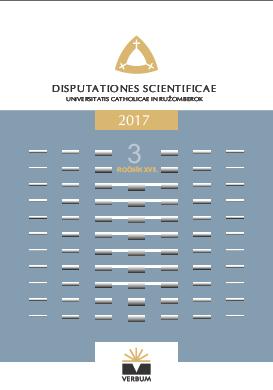
Keywords: Municipal waste; Waste management;
Act no. 79/2017 is a long-awaited legal standard. This standard was to be implemented into national legislation as recommended by the Framework Directive 2008/98/EC as early as 2010. It has brought many changes in the view of municipal waste management, puts the waste management hierarchy into operation, and closes the Recycling Fund.
More...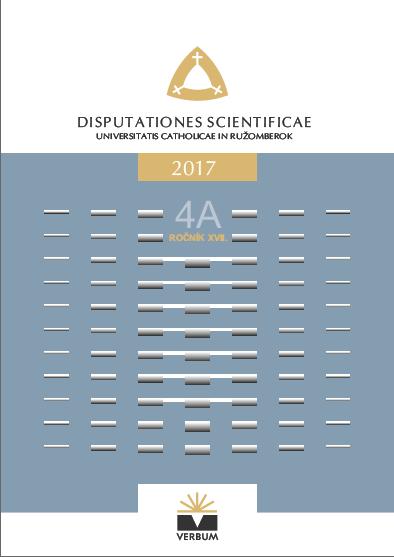
Keywords: Rating; Muscle Imbalance; Pupils in elementary education; School Population; Adult Population;
In the Paper, the Authors are concerned with finding and evaluating the Level of Muscular Imbalance in Pupils in Primary Education as compared to the Adult Population of College Students and middle-aged working Women. To Test the Muscular Imbalance of Postural Muscles, we used the Tests of Janda (1982), modified for the Practice of Thurzová (1992). Where do they assume that University Students have on Average the least ablated and weakened Muscles compared to other Probands of other age Categories.
More...
Keywords: Physical education; Strength abilities; Testing; Assessment;
The author deals with strength abilities of primary school male pupils as he points out importance of the strength abilities and their basic position in conditioning training of the male pupils. A sensitive period of development is considered as significant for the strength abilities among the male pupils of older school ages, as well as their general popularity. The importance is attributed to objective assessment of the strength abilities, as well as selection of tests to assess them.
More...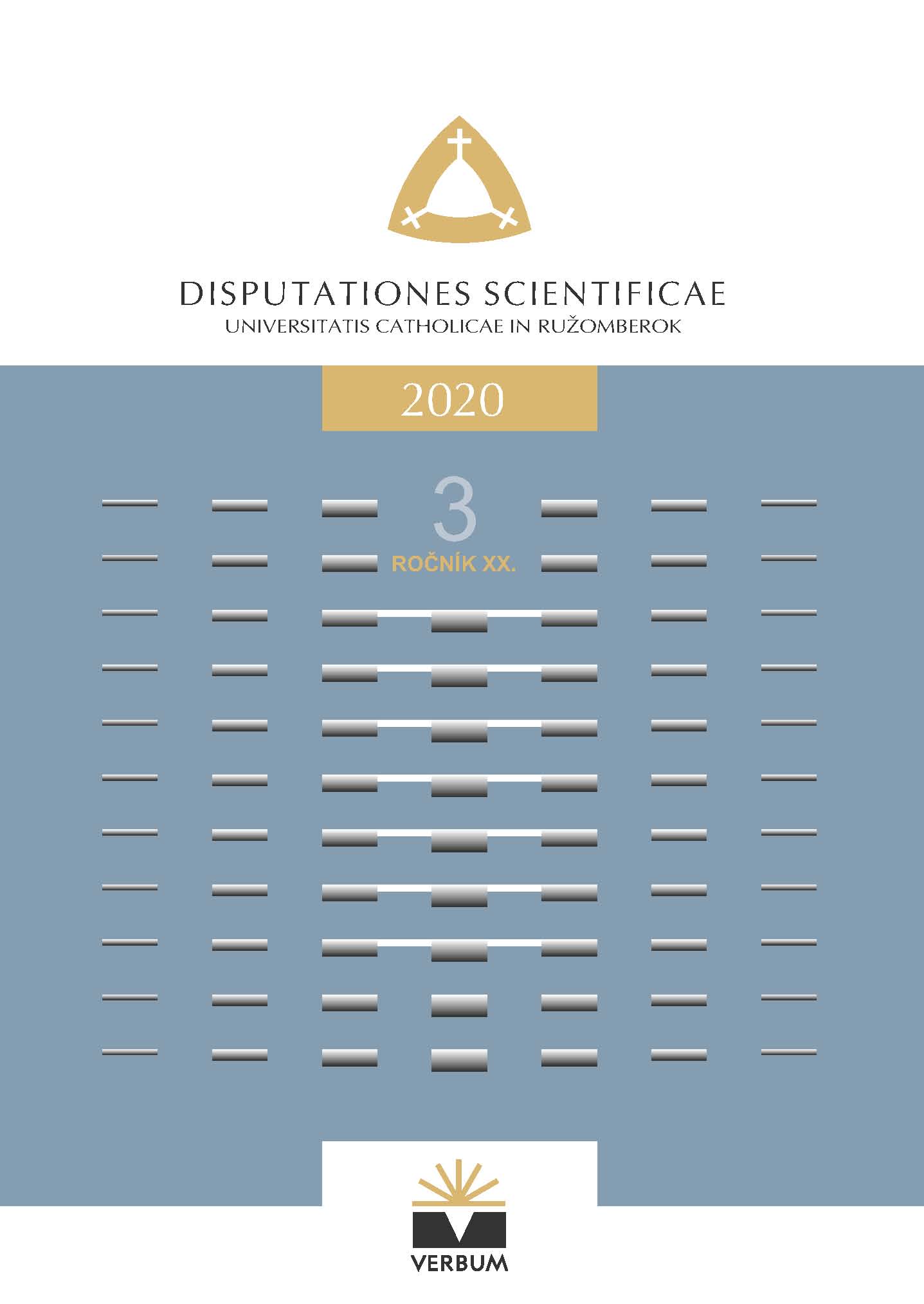
Keywords: Addictive substances; Elementary school pupils; Risky behavior
This paper deals with the problem of substance consumption by primary school pupils. In the theoretical background, it discusses the issue of substance abuse in the context of risk behavior and the protective and risk factors determining these phenomena. It also presents the results of selected research findings in the field. Subsequently, it presents the results of research focused on primary school pupils from the Banská Bystrica region. The aim of the research was to find out the prevalence of substance use (alcohol, nicotine, marijuana) and to identify differentiation in their consumption with respect to gender and grade.
More...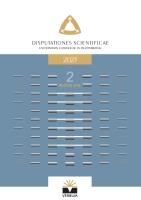
Keywords: Dyspraxia; Movement coordination; Difficulties in the movement of the child of early and preschool age
This paper presents the theoretical and research background in the assessment of the child with dyspraxia before entering primary school. It presents assessment worksheets for early identification and possible professional special education intervention.
More...
Keywords: Andrej Cvinček; Slovak Regional Council
The article is dedicated to the work of the Nitra canon Andrej Cvinček in the Regional Council of the Slovak Republic during his entire term, in which he was first duly elected and later appointed by the government. He was a member of the Country Committee in both election periods. Since political topics were almost completely excluded from the very nature of the council, Cvinček's activities can only be perceived from the position of submitting proposals to the committee related to the all-round development of the Slovak country, especially of an economic nature, even though even here it is not easy and completely possible to attribute the collective body's proposals to Cvinček, their thorough presentation and defense is recognized. In the first election period, he was in charge of budgetary matters in the area of trade, commerce and industry, in the second, in addition, it was mainly about transport matters. His presentations were not met with criticism, rather he was expected to implement the communicated needs in a practical way. His reactions were factual and directed attention to essential things, constructive criticism was understood by him. When it came to specific regional proposals, he did not only support the interests of his region, he repeatedly returned to most topics, and it should be emphasized that he did not skip meetings. In addition to the above, the contribution offers a picture of problems and proposals for their solutions not only in times of economic crisis in individual areas of social life.
More...